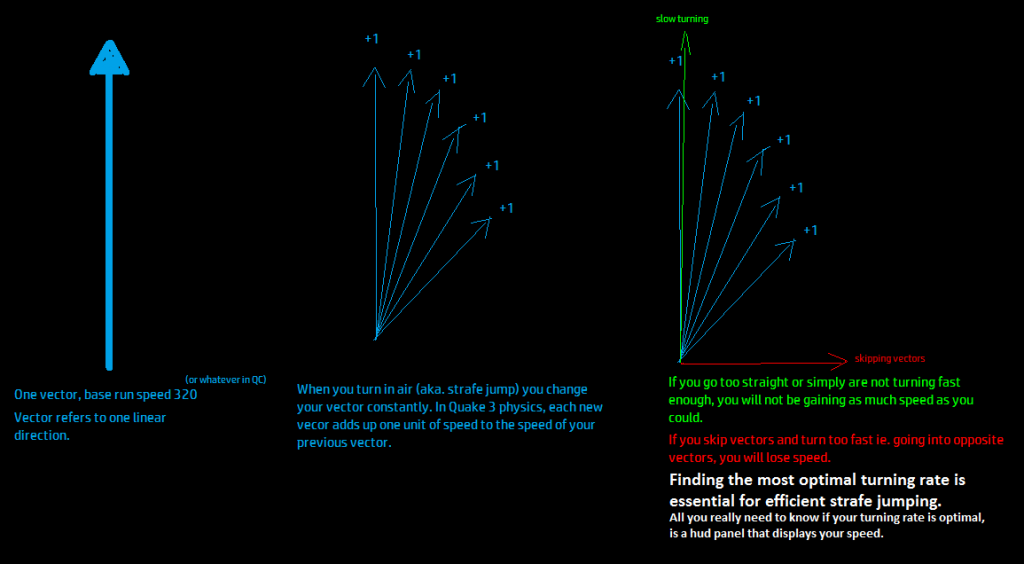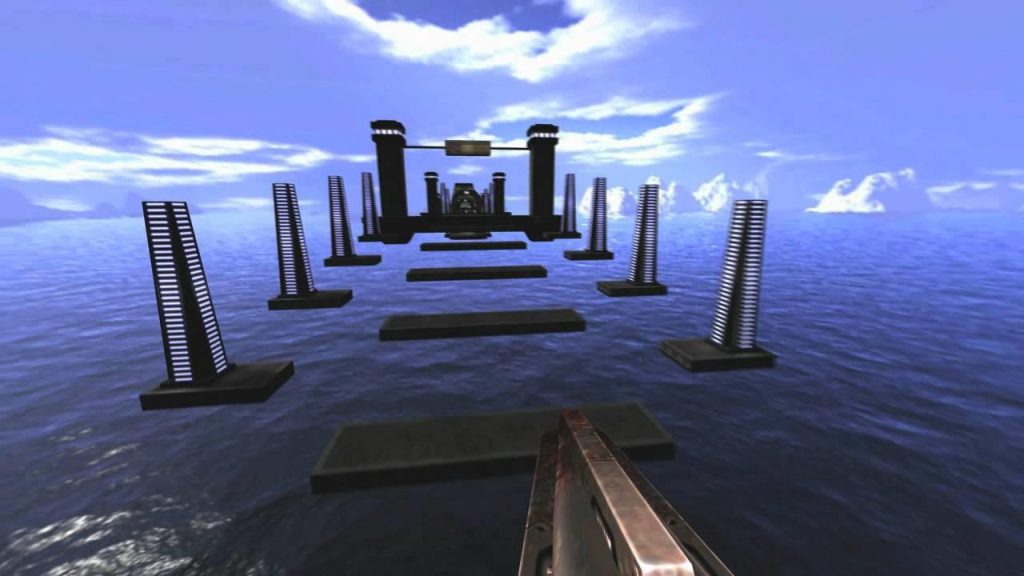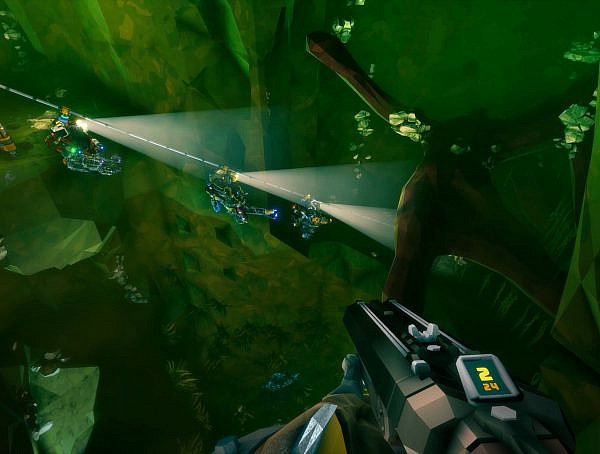From bug to a feature: strafejumping and the legacy of Quake engine bugs.
Strafe jumping is a technique that allows Quake players to achieve a speed level normally unobtainable in the game by exploiting a bug in the game’s physics engine. The technique is based on the way the game calculates friction and player velocity. By jumping repeatedly in certain patterns, players are able to increase their avatars’ velocity beyond the normal limit. Authors Dylan Lederle-Ensign and Noah Wardrip-Fruin cover the exploits’ transformation from a bug to a feature in their article “What is Strafe Jumping? idTech3 and the Game Engine as Software Platform”.
Strafe jumping not only allows players to move through stages faster, it also allows them to make leaps through chasms that would normally be impassable. Players quickly adopted the use of this unintended “mechanic” after it was discovered. Not only did the technique give players a competitive edge against those who did or could not use it, the exhilarating sense of speed it gave them inspired players to create maps and mods based entirely on swift and graceful movement, such as the Quake III Arena mod DeFrag. Although the developers of the game viewed the technique as a bug, whose exploitation conflicted with their vision of how the game should be played, they opted to leave it in game due to player base’s insistence on leaving it in the game.
In the article, the authors approach the subject through the perspective of operational logics. Game engines are often created with particular games and game types in mind. The features that these engines support create the foundation for its operational logics. Thus games that share the same engine often share a lot of the same operational logics; fans of First Person Shooter games who grew up with Quake engine games might find character movement in similar games that employ the Unreal engine to be jarring and vice versa. That is due to the different operational logics of these two competing engines, even though they were created for the same purpose (FPS games). There’s a long lineage of games which are based on the original Quake engine, and thus feature similar physics & allow for strafe jumping, such Valve’s Half Life 2 (2004), whose Source Engine has its roots in the Quake engine. Exploits and movement techniques based on the original Quake, which was the first 3-dimensional first person shooter and thus heavily copied by competitors, became widespread in the industry during the late 1990s and early 2000s for that reason, as the Quake engine was widely adapted.
Although the feature started out as a bug, even the level designers at iD software (the developers of the Quake series) started utilizing it in their work by the third installment Quake 3 Arena. In other words, the strafe jumping was elevated from a bug to a feature despite iD software’s initial negative reaction towards its use. The story of the strafe jump illustrates the how much influence operational logics that are embedded so deep within the game engine that even the game’s creators might be unaware of them can exert power over the player experience.
Famous jump found in a Quake III Arena level which the authors used as an example of strafe jumping being integrated into iD’s level designs
Original article: http://todigra.org/index.php/todigra/article/view/35/95
You might also like
More from Game Research Highlights
How do you want to do this? – A look into the therapeutic uses of role-playing games
Can playing RPGs contribute positively to your wellbeing? A recent study aims to find out how RPGs are being used …
Eldritch horrors and tentacles – Defining what “Lovecraftian” is in games
H.P. Lovecrafts legacy lives today in the shared world of Cthulhu Mythos and its iconic monsters. Prema Arasu defines the …
Are Souls Games the Contemporary Myths?
Dom Ford’s Approaching FromSoftware’s Souls Games as Myth reveals the Souls series as a modern mythology where gods fall, desires …

















